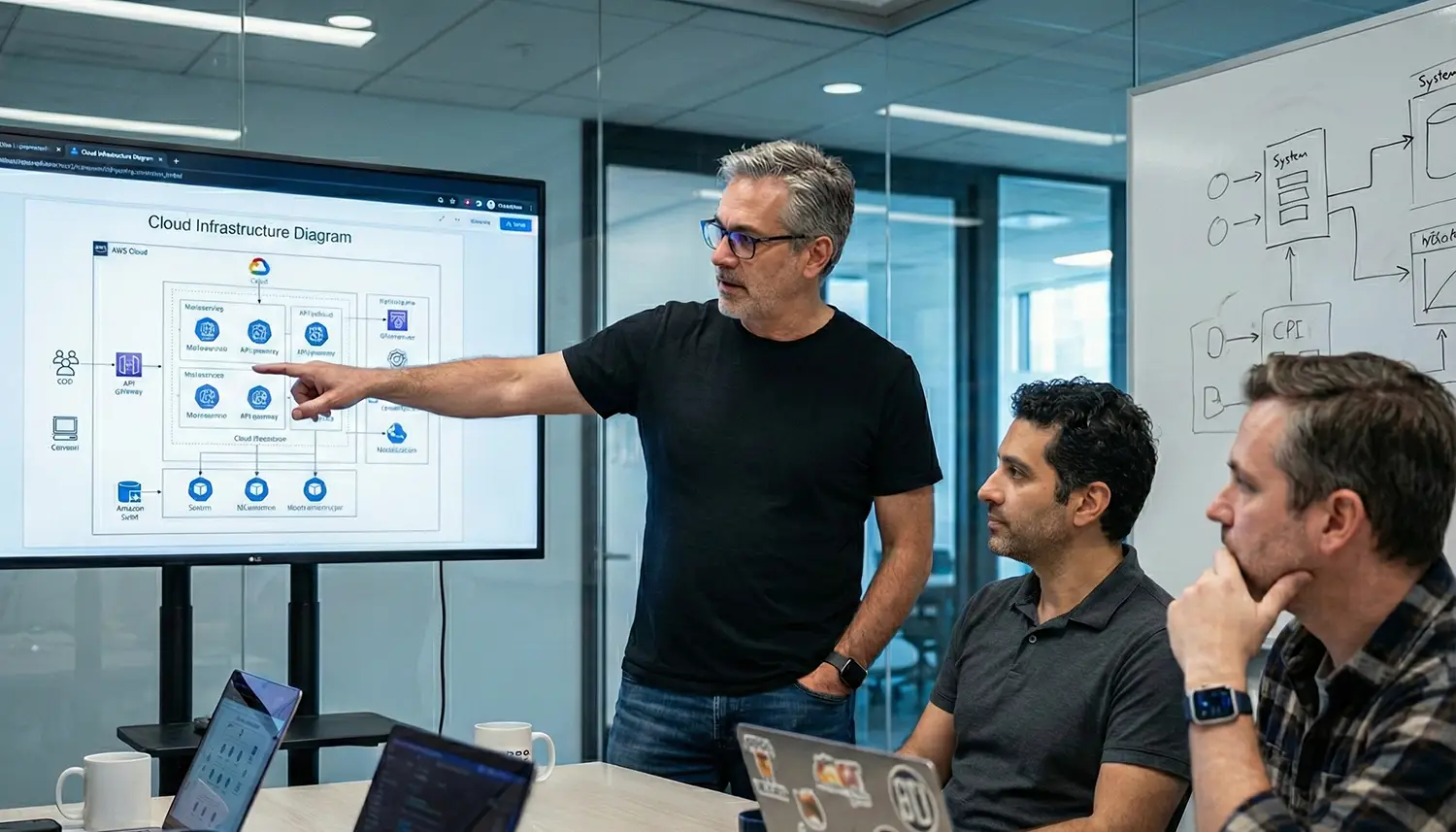In this article:
- The increasingly important role of Digital Transformation in business
- Why openness to change is essential in Digital Transformation efforts
- Evaluation of your IT landscape is fundamental to a Digital Transformation plan
- Clear vision of priorities is needed to craft Digital Transformation initiatives
- Businesses undergoing Digital Transformation should consider Digital Transformation Advisory Services
Digital transformation is sweeping through the industry as a new and urgent priority. Digital transformation is the process of using up and coming digital technologies to either modify or create new business processes. With the ability to elevate digital processes, such as generating processes in a self-managed way, digital transformation enables companies to attract more customers, generate new ideas, and drive more business overall. Digital transformation may represent a large expenditure of time and resources at the forefront, but, if done properly — such as with digital transformation advisory services –will most certainly pay off in the long run.
Today, businesses spanning various industries are undertaking digital transformation as a pivotal step to grow to the next level. In fact, 66% percent of CEOs report that digital transformation is at the center of their corporate strategy. Implementation of digital transformation affects the organization both technically and culturally, so it’s important to plan and prepare for both, in order to achieve the best results. Implementing system-wide change is not easy, but digital transformation is worth it if your goal is to grow and accelerate your business. While there is no defining step to beginning digital transformation, and each organization will need its own custom approach, there are three things to keep in mind as you begin exploring the process.
1. Openness to Change
Change is an inherent part of digital transformation, and embracing change is crucial to accelerating your organization’s digital transformation process. But initiating change on such a scale is not easy. We are used to our processes. For a real life example, think of your visit to the grocery store. If you’re accustomed to dedicating an hour to grocery store visits, ticking items off a list as you browse aisles, stashing reusable bags in your car, and navigating a cart throughout the store, then ordering groceries online for curbside pickup or delivery is going to entirely strip you of that process you’ve oriented yourself around. Never mind that curbside is time-efficient and hassle-free, with a relatively hands-off approach to stocking your fridge and pantry. Despite it being faster and easier, you may find yourself resisting it because it’s not how you’ve grocery shopped your whole life. Cultural change is difficult. In that same way, migrating to the cloud from a server might feel like less control and oversight, but it also greatly reduces time spent managing those same servers, so the main challenge is overcoming your own mental blocks.
Some companies are content with the way that things are. Legacy technology can work, but it doesn’t always deliver the best possible outcome. As long as a legacy technology gets the job done, that may be enough to deter some companies from adopting digital transformation efforts. But digital transformation is about more than making something “work just fine”. The transformation process allows companies to ensure that they have the resources and infrastructure to keep their platform consistently up to date, and that it’s performing as its best with the right purpose. A willingness to make changes that will benefit your organization is the first step to accelerating your digital transformation.
2. Honest Understanding of Where You Are
Another critical point of accelerating your digital transformation campaign is having a comprehensive understanding of where your organization currently stands. Knowing the ins and outs of your organization’s budget and technical needs will kickstart your DT efforts. This requires introspection and analysis. What is financially feasible? What are the strengths and weaknesses in your IT landscape? What are your priorities? What is working for you and what isn’t? Is it time sensitive? An in-depth knowledge of your IT needs establishes a groundwork for what can be done, and what might need prioritization over other things.
Without an understanding of what’s already in place, and an honest evaluation of strengths, weaknesses, and priorities, it’s impossible to proceed to the next step.
3. Clear Vision Can Be Accomplished With Digital Transformation Advisory Services
Another part of accelerating your digital transformation efforts is having an understanding of where you want to go. Digital transformation can include many offers such as CI/CD pipeline, testing architecture templates, streaming data and analytics, or selecting the right public cloud provider. What is your organization trying to achieve? A clear understanding of the goal you are trying to attain is crucial. Some companies might have the ultimate end goal of knowing what their customers will want in the future. Another vision for your organization might be to have the bandwidth to assist one million users per second. Another organization might have the end goal of improving their applications architecture.
Some of these end goals are easily measured, others are subjective to the organization. If improving application architecture is the end goal, it is helpful to think of how to specify or measure that. That could mean focusing on improving the failure points that may be affecting the application. For example, if the application is unable to respond to requests when there are more than 100K users at the same time, that might mean the app was not suited to handle that amount of requests due to a lack of scalability both on application layer and Database layer. In that case, besides re-architecture of the application (the long-term implementation), the implementation of some additional fixes to the current architecture such as generating, implementing, auto-scaling, or creating read-write replicas or partitions in the database allows functionality of the app while implementing the longer term solution.
One thing to keep in mind is that businesses contemplating digital transformation can often be helped by digital transformation advisory services. A technology solutions partner is engaged from start to finish, as opposed to implementation partners that help build applications that are already planned or designed. Technology partners begin by working with your company’s C-suite to determine the best digital strategy, and create a transformation plan where your specific business goals serve as the centerpiece. Utilizing digital transformation advisory services offers an organic approach, helping build a well-informed strategy with a solid foundation.
In Conclusion
If you have questions or comments about accelerating your digital transformation process, or would like to speak with one of our experts directly about digital transformation advisory services, please fill out the form and we will respond.
About Rodrigo Rodriguez
Rodrigo Rodriguez is the Director of Delivery and Development Practices and Software architect in Digital Transformation Services based in GAP’s Costa Rica office. Rodrigo is a passionate developer, trainer, project lead and Scrum Master with over ten years of experience. Rodrigo has worked on Product Owner tasks for internal projects, leading multiple types of teams and company related initiatives to improve different areas of the company. You can connect with Rodrigo on LinkedIn, or send him an email.



